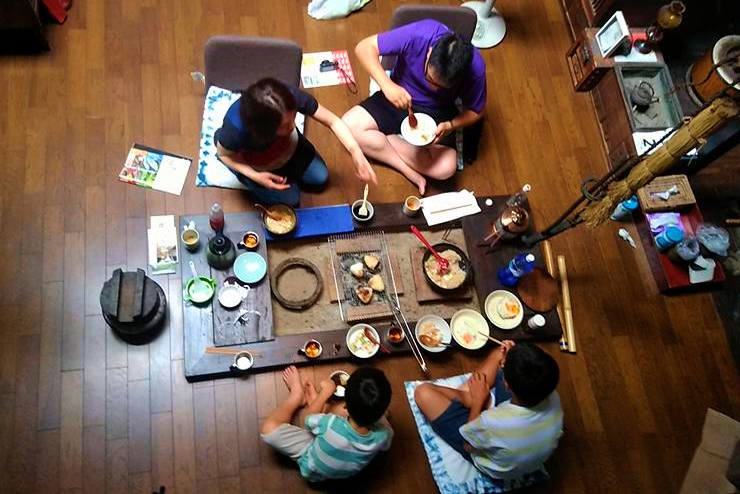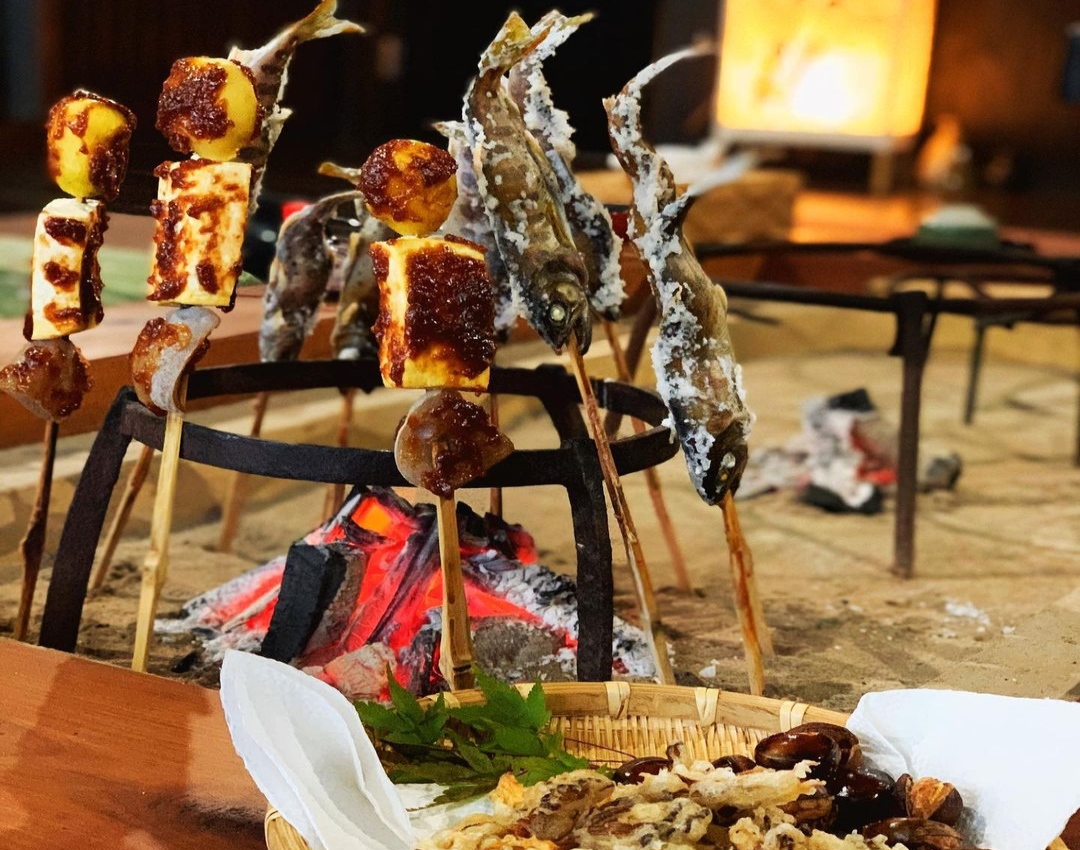Experiencing Iya Life Around the Irori (Part 2)
2021.01.20
Experiencing Iya Life Around the Irori (Part 2)
An essential multi-function fixture
Historically, irori in the farmhouses of the Iya Valley served a variety of functions. For one, they would be used as a place to both dry wet clothes and to dry foods for preservation. And until relatively recently, tobacco was grown as a cash crop throughout the Iya Valley, and the harvested tobacco leaves were annually strung up on ropes in the rafters above to dry and cure with the aid of the irori smoke.
Another key importance was in how the smoke would raise up and permeate the thatched roof, helping to dry it out while also stopping insects from nesting there, and thereby preventing the thatch and its framework from rotting.
And while an irori always served as a gathering place for the family, around which they would tell stories while doing their daily evening tasks, one of the main functions was of course for cooking, and the Iya Valley has a variety of traditional irori-based foods.
Barbecued river fish and wild game meat, roasted vegetables, and simmering stews all offer a hearty down-home taste that is intrinsic to the valley. One of the unique offerings only found in Iya is called dekomawashi, where a small local potato, a cube of dense local tofu, and a wedge of konnyaku are all put on a bamboo skewer, slathered with sweet miso paste, and stuck into the irori pit around the fire to slowly roast.
Indeed, the offerings of the irori are nourishment to both the stomach and the soul.
In Part 3, we will explain how and where visitors can experience irori life in Iya.
(By: Shaun Lamzy)
For more information about travel in Miyoshi, check IyaTime.com
Official Travel information:https://miyoshi-tourism.jp/en/
Related Posts
-
Exploring Oboke Gorge – Part 2 | A Place for Food, Fun… and Monsters?!
The thrilling cliffs of Oboke Gorge are formed by the mighty Yoshino River as it cuts its way throug
2023.03.21
-
Exploring Oboke Gorge – Part 1 | A Natural Wonder of Miyoshi City
The mighty Yoshino River flows across much of Shikoku, and as it cuts its way through the rugged mou
2023.03.20
-
Iya Kanko Ryokan – Part 3 | Inheriting the Tastes of the Iya Valley
Just a few minute walk from the famed Kazurabashi Vine Bridge, the Iya Kanko Ryokan has been welcomi
2023.03.19
-
Iya Kanko Ryokan – Part 2 | A Family-Run Business Where Life is a Juggle
The Kazurabashi Vine Bridge is one of the most renowned sights of the Iya Valley, and just a couple
2023.03.18
-
Iya Kanko Ryokan – Part 1 | A Traditional Inn near the Kazurabashi Vine Bridge
Acclaimed as one of Japan’s Three Unusual Bridges, the Kazurabashi Vine Bridge is one of the most fa
2023.03.17
-
The Shikoku “Yukigassen” Snowball Fight – Part 2 | The Heat of the Battle in Icy Conditions
The 19th annual “Yukigassen” Snowball Fight Tournament was held recently in the deep mountains of Mi
2023.02.19


















